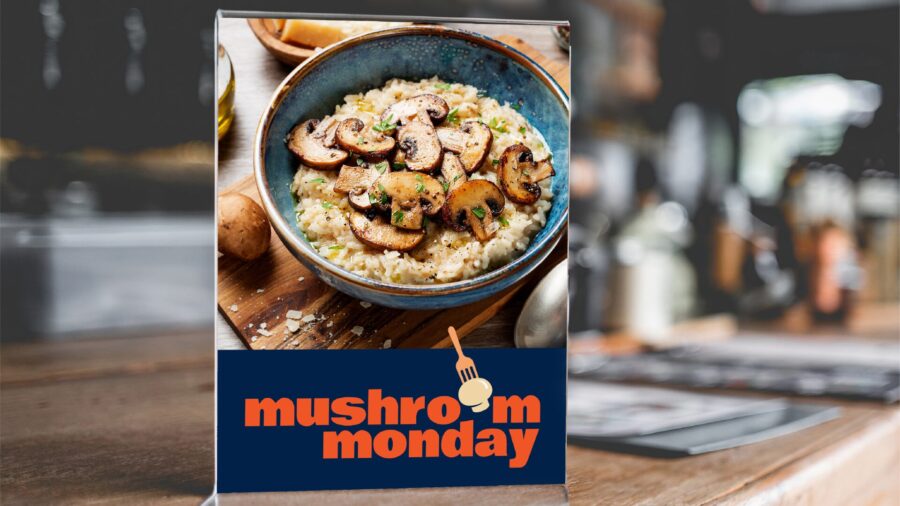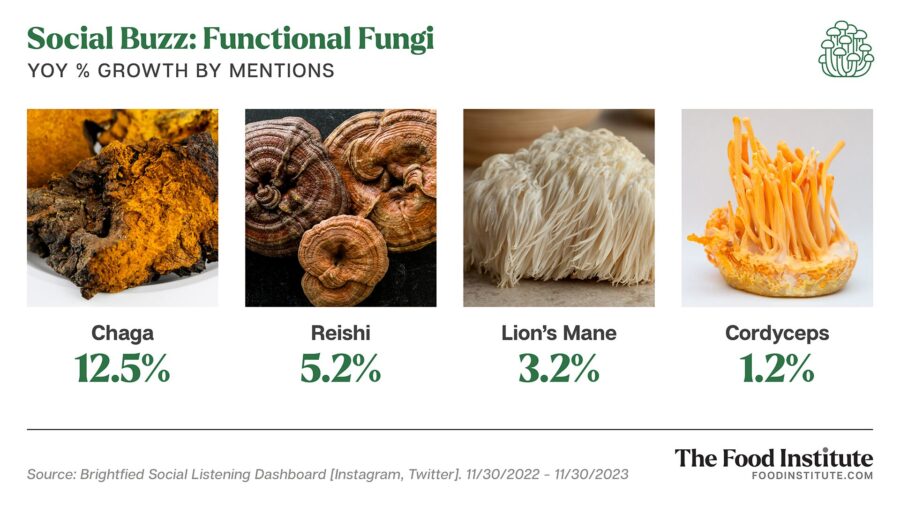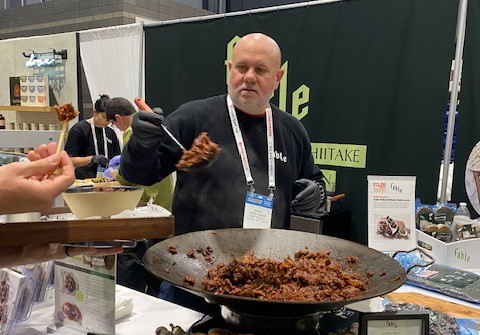Things keep looking up for mushrooms. The versatile fungi continue to proliferate across meals-at-home, CPG, restaurant menus, and food tech.
As The Mushroom Council highlights, nearly a dozen major media outlets, restaurant reviewers, and tech companies have placed mushrooms in their forecasts for 2024.
So what’s new in the category — and how is food tech further fueling the ‘shroom boom?
In-Store Mushroom Trends
After touring more than 100 different grocery stores in 2023, Anne-Marie Roerink observed several merchandising trends.
More specialty varieties: “In some cases, these were specialty mix packs, such as oyster, trumpet, and shiitake, and in other cases packages of one type of specialty, ranging from lion’s mane to maitake mushrooms,” the founder of 210 Analytics told The Food Institute. “This trend is very much tied to the headlines we see in the consumer media along with the growing presence of various mushroom powder supplements in the HBC aisles and/or already in coffees, cookies, etc.”
Stuffed mushrooms: “Large and small retailers alike are carrying stuffed mushrooms not just in produce, but also in the self-service meat case, the full-service meat counter, and the deli grab-and-go,” said Roerink. “I believe this is a trend with staying power as consumers are interested in plant-based foods but want fruit and vegetables to take on that role as they increasingly push back on ultra-processed items.”
Eye-catching displays: “Several retailers now have in-store growth containers so consumers can see the mushrooms first-hand,” Roerink added. “Others brought in a few of the logs that were sitting on top of the display or even have them for sale in case consumers wanted to try their hand at growing some mushrooms at home.”
Move Over Taco Tuesday
Roerink observed an uptick in restaurants serving mushrooms in sushi as well, which provides a plant-based option as an alternative to seafood substitutes.
The Mushroom Council is also focusing on foodservice in 2024 with Mushroom Monday. The newly launched marketing initiative encourages restaurants to spotlight their mushroom-forward dishes on the Council’s website.
“The meal landscape continues to be home-centric and after nearly four years of cooking more, consumers are struggling with the dinner puzzle. Add to that the pocketbook pressure and life’s hecticness and any programs that make it a little easier for consumers to figure out what’s on the menu are welcomed,” said Roerink.
“Mushrooms’ versatility across meal occasions, as well as cuisines, means that both food operators and retailers have some great flexibility to be creative.”
Mycelium Making Waves
In the food tech space, mycelium continues to gain traction as an ingredient. The nutrient-dense root structure of mushrooms serves as a whole-protein food source with umami-flavor.
“Mushroom meat” producer Meati kicked off 2024 with a distribution deal with select Super Target stores nationally and an agreement to expand in Albertsons markets.
The Target deal puts the company on track to achieve its goal of being in 8,000 food stores nationwide by the summer, said COO Scott Tassani in an interview with Food Dive.
Meanwhile, food tech innovator Mush Foods announced the launch of 50Cut, a restaurant-ready line of chef-crafted mushroom-mycelium blends. According to the company, swapping 50Cut into recipes in place of some of the meat can enhance flavor and nutritional value while improving cost and reducing the environmental impact in every dish.
The Food Tech Factor
How significantly will such tech-driven innovations impact traditional mushroom consumption in the year ahead?
Roerink believes that food tech will ultimately make inroads in almost every category in the store. However, while consumers welcome technology in every part of their lives, they are more hesitant when it comes to their food due to concerns over food safety, taste, and longer-term health implications.
“Especially in today’s environment, consumers are trying to spend their money wisely, prevent waste, and are focused more on routine meals because of it,” said Roerink. “At the same time, they want the short cuts to integrate nutrients in foods they consume anyhow. So there needs to be a lot of transparency and education about the process to take away any concerns.”













